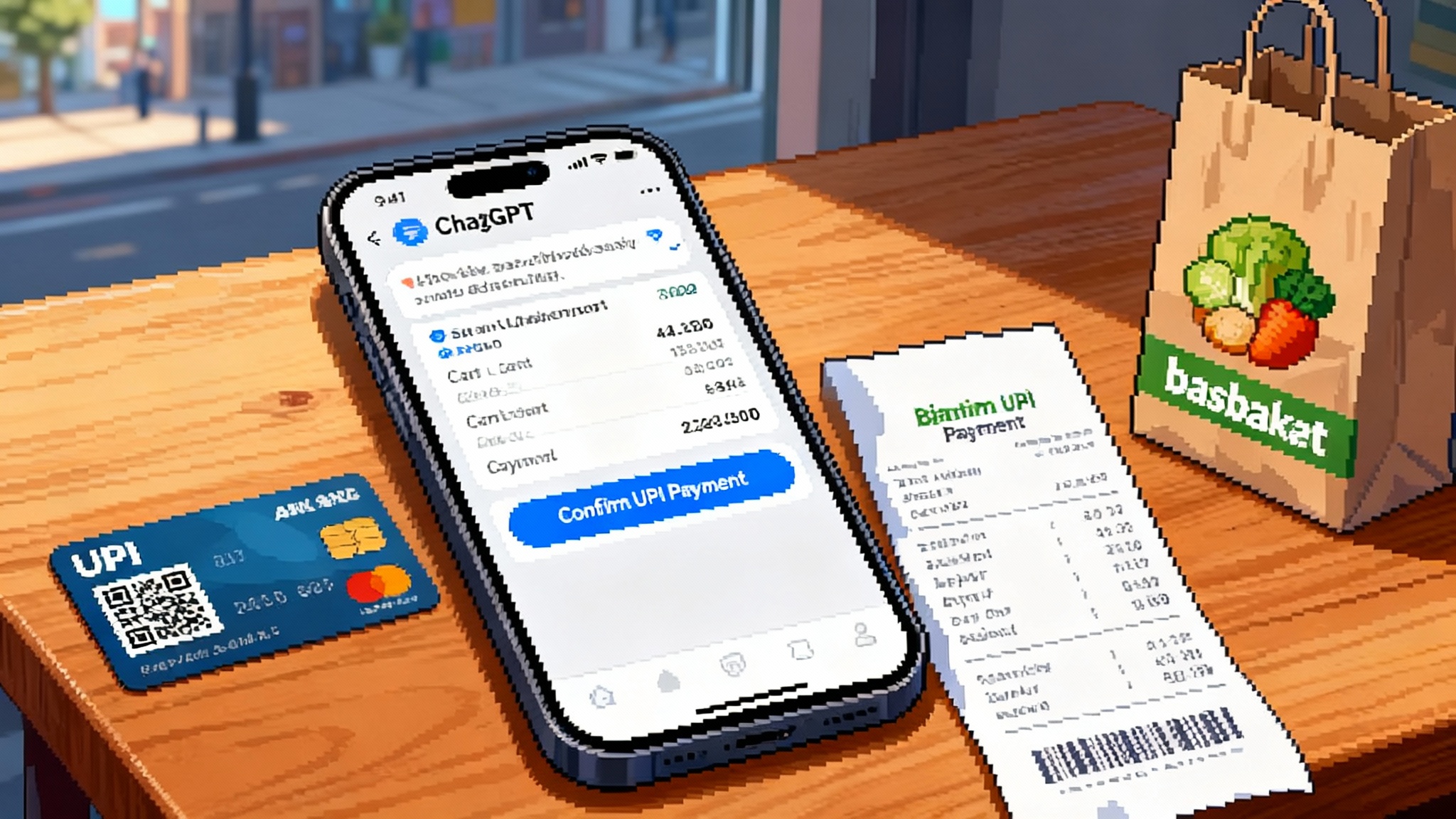Oracle’s Fusion Agents Begin Running the Enterprise Back Office
At Oracle AI World on October 15, Oracle embedded AI agents across Fusion Cloud apps for finance, planning, supply chain, and CX. The shift moves enterprise AI from chat to execution inside the system of record with human control.

Breaking news: agents arrive where the work actually lives
LAS VEGAS, October 15, 2025. On the main stage at Oracle AI World, Oracle introduced a slate of new agents across Fusion Applications that operate inside finance, planning, supply chain, and customer experience. The pitch is direct and bold. Instead of an assistant that drafts a response in a chat window, these agents take action inside Oracle’s system of record and ask for confirmation where policy requires. For organizations already running Fusion Cloud, this is not a sidecar demo. It shows up where teams approve invoices, tune forecasts, expedite orders, and resolve customer issues.
If you run Fusion Cloud, the change is architectural. Agents now live where the transactions live. That shifts the conversation from copilots that advise to autonomous execution with human control. The result is a cleaner path to measurable outcomes: fewer touches, faster cycle times, and stronger audit trails.
What Oracle actually shipped today
Oracle’s first wave of agents maps to core back office jobs that consume large volumes of human time. The emphasis is on policy-aware execution with built-in approvals and traceability.
Finance and planning
- Payables Agent automates multi-channel invoice capture, matching, and accounting, then routes exceptions for approval. Think of it as an always-on clerk that never tires and never forgets a policy.
- Ledger Agent monitors the books, answers natural language questions about fluctuations, and drafts adjustments with evidence attached for review.
- Planning Agent runs continuous what-if forecasts as operational data changes, moving planning from monthly rituals to event-driven updates.
- Payments Agent manages early-pay discounts, virtual cards, and bank interactions to optimize cash while preserving controls.
Supply chain and order operations
- Quote to Purchase Requisition Agent converts supplier quotes into requisitions without swivel-chair rekeying.
- Fulfillment Processing Assistant Agent accelerates urgent shipments by orchestrating pick, pack, and ship steps across the warehouse.
- Sales Order Assistant Agent assembles complete orders with items, pricing, promotions, availability, and delivery schedules.
Customer experience
- Account Product Fit Agent prioritizes accounts using intent, profile, and engagement signals to boost pipeline quality.
- Deal Advisor Agent surfaces the right proof points and playbooks to sellers at the moment of need.
- Escalation Prediction Agent flags service cases likely to go sideways so leaders can intervene early.
All of this runs inside Fusion, on OCI, and inherits enterprise security and approvals. No screen scraping. No brittle connectors. No shadow credentials.
Why system-of-record-native matters
Enterprises rarely fail at automation because they lack clever prompts. They struggle because data, permissions, and control live in different places than the assistant. Putting agents inside the system of record changes the physics in four important ways.
- Security inheritance. Agents adopt the role-based access controls your teams already use. If a role cannot see payroll, the agent cannot see payroll. You eliminate the drift between tool-specific permissions and official policy.
- First-party data fidelity. Agents act on real business objects through supported interfaces, not fragile screens or scraped fields. They read and write to the canonical ledger, order, or plan, which improves auditability and resilience when the UI evolves.
- Embedded controls. Approvals, segregation of duties, and policy checks live in the same application tier as the transactions. Agents call those controls rather than reinvent them, which keeps compliance inside the flow of work instead of after the fact.
- Observability. Because actions happen in-app, you can trace what the agent did, why it did it, and what evidence it used. That is essential for internal governance and regulator-friendly audit trails.
Inside the agent platform
Under the covers, Oracle is shipping an agent platform alongside the applications. Oracle calls it AI Agent Studio for Fusion Applications. Studio provides a design and runtime environment for building, testing, and governing agents and agent teams. It exposes Fusion business objects as tools, supports policy-aware orchestration, and includes evaluation harnesses that inherit the application’s security model. The goal is to assemble task-specific workers that understand your data, approvals, and exception paths.
Two complementary pillars round out the approach:
- Agent Marketplace. Oracle and partners will publish validated agents customers can deploy as if they were first-party features. The marketplace is curated, reviewed against a checklist, and designed for one-click installation. See the Fusion Applications AI Agent Marketplace announcement for how this distribution channel is expected to work.
- In-product evaluation. Oracle is embedding trace and measurement tools so teams can run A/B tests on prompts and tools, capture failure modes, and track business outcomes rather than token-level metrics.
From copilots to execution
Think of your back office as a city. Copilots are helpful guides that whisper directions to the driver. Useful, but the driver still does everything. Agents are licensed drivers who know the traffic laws, carry your corporate badge, and can operate the vehicle. They still ask for a thumbs-up at tricky intersections, but otherwise they keep the city moving while the dispatcher watches the dashboard.
A 30-day pilot that proves value without risking the ledger
Here is a concrete plan any finance, supply chain, or customer experience leader can run in one month. The goal is to prove measurable impact with human-in-the-loop control and a tight set of KPIs.
Week 1: Pick one narrow, high-volume lane
- Accounts payable from invoice ingestion to posting, with policy checks for exceptions.
- Order operations that convert email quotes into requisitions without manual rekeying.
- Service triage that predicts escalations for one product line and routes early interventions.
Define success metrics up front:
- Straight-through processing rate for invoices or orders.
- Cycle time from receipt to accounting or from quote to requisition.
- First-contact resolution for at-risk service cases.
- Exception rate by failure mode category.
- Human touches per transaction.
Week 2: Wire in guardrails and routing
- Use existing approval workflows. Agents propose, humans approve where policy requires.
- Set confidence thresholds. Above the threshold, auto-proceed with post-facto sampling. Below it, require review in a queue.
- Enable trace capture. Store prompts, tools invoked, and objects touched so auditors can reconstruct what happened.
- Map roles to the agent. Grant only the minimum permissions needed for the task.
Week 3: Parallel run with a clean baseline
- Run the agent on a shadow batch while your team processes normally. Compare outputs, cycle times, and exceptions.
- Tune prompts and tools based on the top three error categories you see.
- Expand volume gradually, but hold scope. Resist the urge to add features mid-pilot.
Week 4: Controlled go-live and report out
- Move to human-in-the-loop production for the selected process.
- Publish a one-page pilot report with baseline versus pilot metrics, sample cases, exception taxonomy, and a recommendation to scale or stop.
- If you scale, add one adjacent step such as tax code application or packing recommendation, not a different process.
How this differs from robotic process automation
RPA taught bots to click screens the way a person would. That worked for small tasks, but it carried hidden debt that grew with every UI update and exception path.
- Fragility. If a screen or layout changes, scripts break. Agents that operate through supported interfaces and business objects are shielded from cosmetic changes.
- Context. Bots see pixels. Agents see orders, ledgers, items, and policies. That context yields better decisions and fewer false positives.
- Governance. Bots often rely on shared credentials and thin logs. Agents inherit roles, approvals, and audit trails from the application.
- Economics. Bot farms require constant script maintenance. Embedded agents benefit from vendor updates and an ecosystem of validated templates.
If you have an RPA estate, triage it. Processes that touch the system of record and rely on screen scraping are first in line to re-platform onto embedded agents. The payback shows up in lower maintenance, better controls, and fewer exceptions.
Controls and safety that finance and risk teams expect
No one wants a model freelancing in the general ledger. The design leans on three controls that matter to finance, audit, and risk.
- Segregation of duties remains intact. Approvals and roles live in the application where auditors expect to find them, not inside a custom agent project.
- Output validation is explicit. The agent proposes postings and journals, and policy determines whether it flows through or stops for review.
- Observability is first-class. Teams can see what was invoked, what evidence the agent used, and where a human stepped in. Use that visibility to define service levels and to decide where autonomy is warranted.
What this means if you run SAP or Workday
You do not need to rip and replace to participate. Two practical playbooks are emerging.
- Attach Oracle modules where you can. Many organizations already run Fusion Planning or Procurement next to a different ERP core. Agents inside those modules still deliver value and can exchange data through the integration patterns you already operate. Start where you are already on Oracle rather than the hardest cross-suite tangle.
- Use the ecosystem as a bridge. As the Agent Marketplace grows, expect partners to publish agents that respect boundaries between systems. Think of a tax agent that enriches a purchase order regardless of whether it originated in Oracle, SAP, or Workday, as long as the integration exposes the right fields. That lets you capture quick wins while you plan a longer strategy.
For SAP teams that leaned on RPA to automate around legacy transactions, the contrast is clear. For Workday teams accustomed to AI features that assist with insights and drafting, the difference is execution. Oracle’s agents execute the transaction rather than advise on it. If your governance model prioritizes auditable actions over suggestions, system-of-record-native execution is the line to watch.
Implications for procurement networks and ISVs
Procurement generates messiness at scale. Quotes arrive by email, portals, and data feeds. Delivery priorities shift by the hour. Agents like Quote to Purchase Requisition and Fulfillment Processing Assistant tackle that mess where the purchase order is born and where shipments are executed. As partners publish to the Marketplace, expect specialized agents that understand specific supplier formats or industry norms. That specialization is what turns a general agent into a money-maker for a category manager.
Independent software vendors gain a cleaner distribution channel. Instead of shipping a connector plus a services project, an ISV can ship an agent template that installs with one click, inherits customer security, and is supported by the marketplace program. That means lower time to value for customers and a more predictable services mix for partners. Differentiation shifts from who can survive brittle integrations to who can deliver the best decisions, tools, and guardrails.
Monday morning checklist
Want to be the executive who shows results by month’s end? Start here.
- Pick one process where 70 percent of transactions are routine and the remaining 30 percent follow a small set of exceptions. Invoices and email quotes are perfect.
- Baseline three numbers this week: straight-through processing rate, average cycle time, and exception rate by category. Make them your scoreboard.
- Map the approval path you already trust. Declare where humans must review and where post-facto sampling is acceptable.
- Clean the inputs. Standardize invoice layouts from top suppliers. Normalize product and customer master data. Agents learn faster when the ground is level.
- Assign an owner for trace reviews. You need someone who will read the audit trail, tag failure modes, and request prompt or tool updates.
- Engage a marketplace partner only if you need domain depth you lack. Otherwise start with prebuilt agents and move.
How this fits the broader agent wave
Oracle’s move echoes a broader trend in enterprise software. Vendors are making agents the unit of work, measured by outcomes, not tokens. For buyers evaluating architecture choices, three perspectives help.
- The tooling stack is consolidating. A common foundation for tools, retrieval, policy, and testing helps teams ship safely. See how a base layer is forming in the standard stack for enterprise agents.
- Agent teams are becoming the norm. Complex work requires orchestrated roles, handoffs, and governance. Microsoft’s direction is a useful reference in Microsoft’s Agent Teams arrive.
- User interfaces are expanding from chat to direct computer use. When agents can operate applications, latency falls and automation rises. Google’s approach to UI control is covered in Gemini 2.5 Computer Use.
Across these threads, the center of gravity is shifting from assistants that suggest to systems that execute. Oracle’s contribution is to embed that execution inside the system of record where controls and data already live.
The bottom line
Oracle has crossed a threshold enterprises have been waiting for. When an agent can ingest an invoice, match it, book it, and route a payment under your policies, you are no longer talking about a chatbot. You are talking about a digital workforce that shares your badge and follows your rules. There will be heavy lifting. Policies need tuning. Exceptions need pruning. Data will need cleaning. But the core insight stands. By making agents system-of-record-native and packaging them as product, Oracle has turned enterprise AI from a parade of demos into an operating model.
If your next board update demands proof, you now have a playbook. Start small, wire in guardrails, measure relentlessly, and publish the results. The organizations that move first will not just save minutes. They will harden controls, streamline operations, and set a blueprint others will follow.








